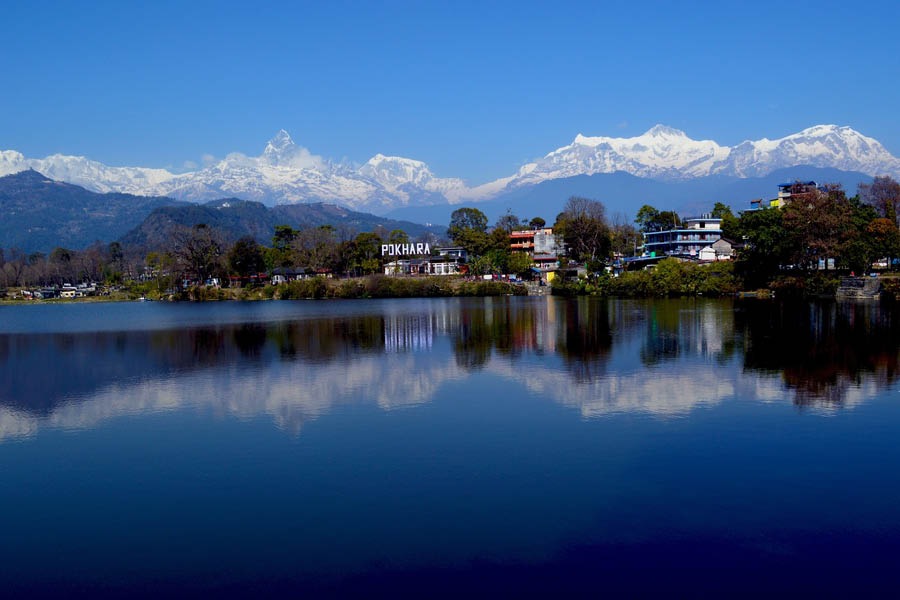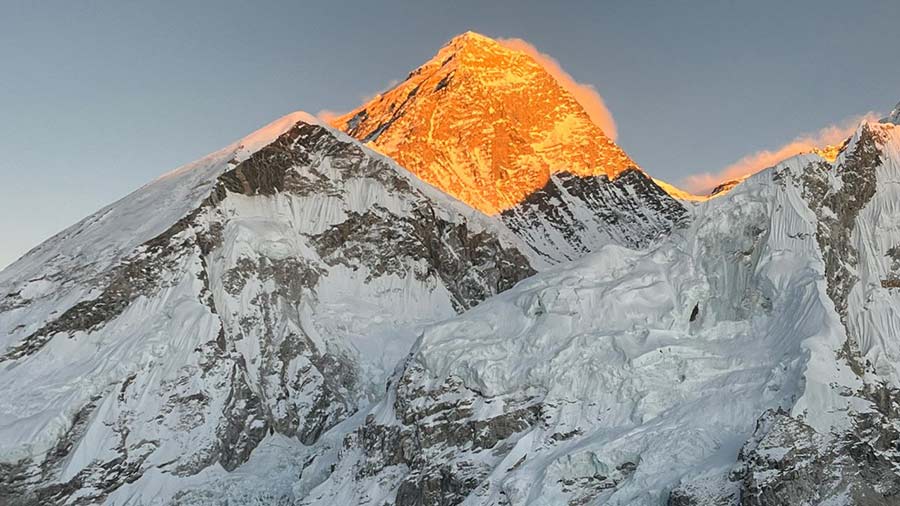It is 5.30am, and in the distance is the ethereal sight of some of the highest mountain ranges in the world. The Annapurna range, between Nepal and Tibet, with 13 peaks over 7,000 metres (about 23,000 feet), is bathed in the orange-pink glow of the first rays of the sun. I am in Pokhara, Nepal’s second largest town, and once an important hub in the trade route between India and Tibet / China.

Paragliding to microlight flyings — the options for adventure are plentiful in Pokhara Shutterstock
Today, it is Nepal’s adventure capital and the gateway to the Annapurna mountain range, with everything from bungee jumping to paragliding on offer. Pokhara comes from the Nepali word pokhari, which means pond, and has more than nine freshwater lakes like Phewa, Rupa and Begnas. Once a small stop in a trading route, Pokhara became a commercial centre in the 17th and 18th centuries, when Nepal’s king invited Newari traders from Bhaktapur to the town. Until the 1960s, the town was accessible only by foot and was considered a mystical place.
A historic mountain stay
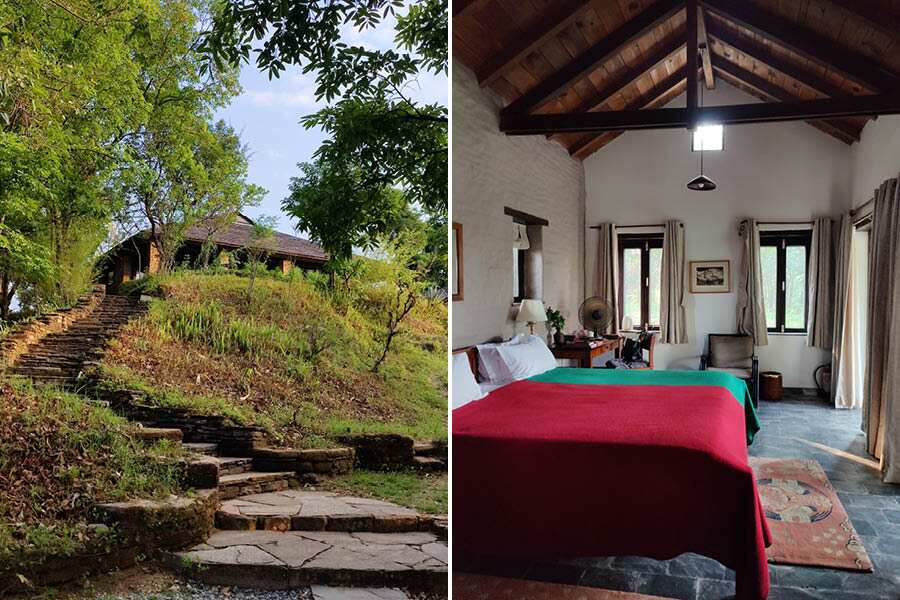
Tiger Mountain Pokhara Lodge is nestled in a forest on a high ridge, with rustic rooms that open to mountain views Kalpana Sunder
The historic Tiger Mountain Pokhara Lodge, inaugurated in 1998 by none other than Sir Edmund Hillary, is perched on a ridge 1,000 feet above the valley, on the route of the original 1980s Royal Trek for the Prince of Wales in 1980. The lodge has native trees on its grounds and a community forest with ficus, bamboo, fruit trees like passionfruit, shrubs and grass terraces that it helps manage. The forest is a haven for more than 360 bird species and more than 280 species of butterflies.
The rustic rooms in clustered cottages with hand-cut stones and slate roofs are furnished with Tibetan rugs and wooden furniture, echoing the aesthetic of a typical Nepali village. Watercolour paintings of the mountains and black-and-white images of the early mountaineering pioneers decorate the walls. With no television in the rooms, and packed book shelves and board games on offer, you can have a digital detox getaway and reconnect with nature. The central area of the lodge has a hearth and comfortable sofas, where you can curl up and read books on local mountaineering history.
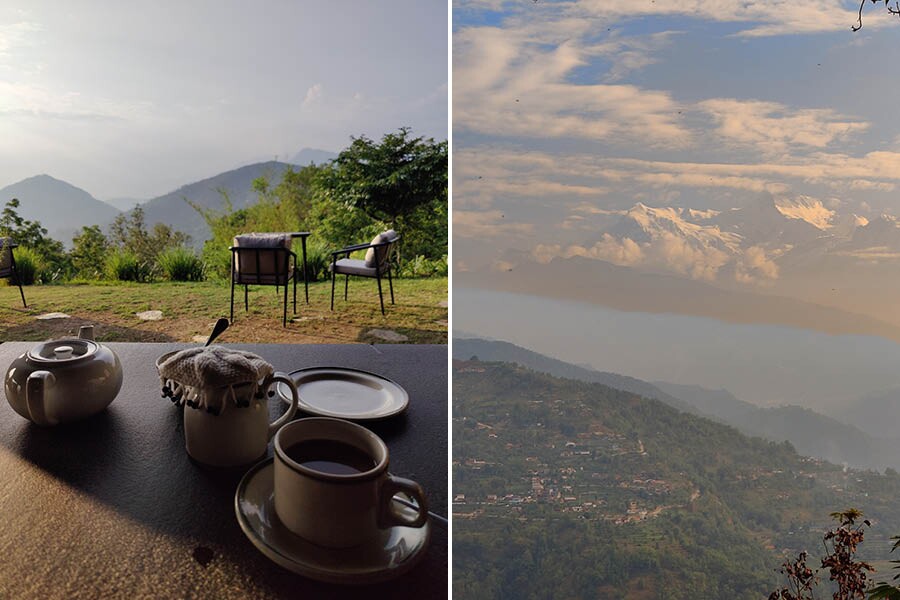
The views of the snow-capped Annapurna range from the lodge Kalpana Sunder
The showstopper, of course, is the view of the surrounding mountains, which include three 26,000-foot-tall peaks. Unfortunately, I am here in the summer, when the summits are usually hidden behind clouds during the day, but I wake up at the crack of dawn to get a glimpse of the razor- edged Machhapuchchhre (Fishtail) peak with an elevation of 6,993 metres (22,943 feet) and other peaks of the Annapurna range.
The mornings are great for a dip in the infinity pool, which is cleaned using rock salt and tucked into a grove. A leisurely swim as the peaks reflect in the water, with birdsong in the air, watching eagles and vultures soar up in the sky is a great way to start the day here.
A relaxed holiday
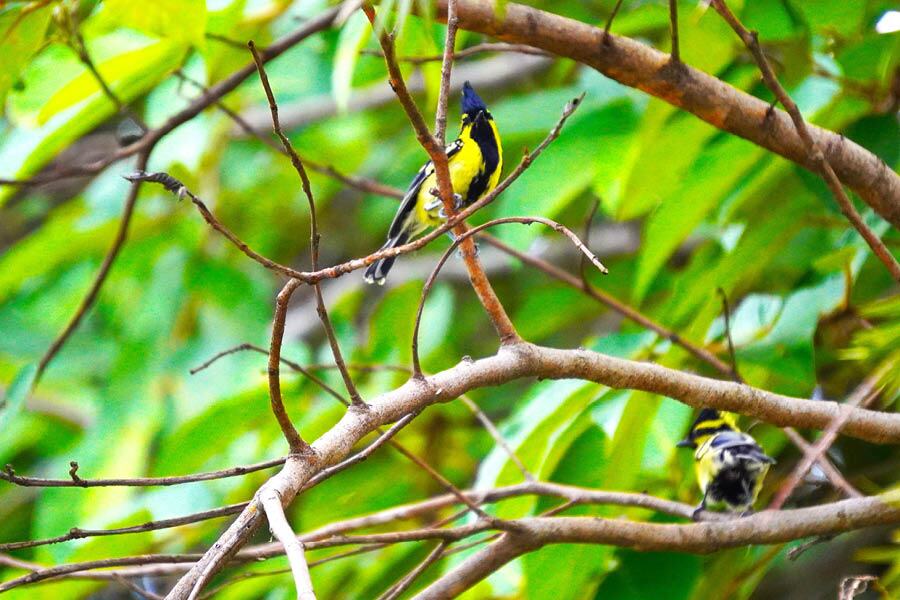
Birding is a popular activity in the community forest that surrounds the Tiger Mountain Pokhara Lodge Kalpana Sunder
Most people come to Pokhara, to have an active holiday — trekking the Annapurna range, mountain biking, or chasing an adrenaline rush with activities like microlight flying, ziplining and paragliding. River rafting and white water rafting on Seti Gandaki River and its tributaries are also on offer.
However, I opt for a slow-paced holiday where I sketch and paint the scenery and go birding with Jhalak Chaudhary, the naturalist at the lodge, who carries a pair of binoculars and a powerful telescope, showing me the prolific avian life around the lodge. We spot an owlet, blue throated barbets, babblers and cuckoos. A yellow throated marten zips past us and Jhalak tells me that leopards often walk across the property late at night!
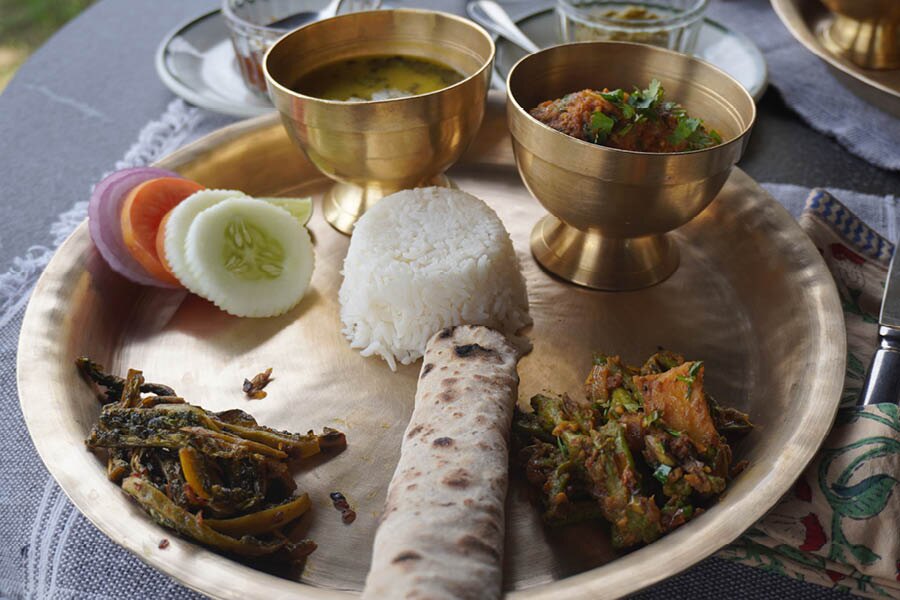
A traditional Nepali thali Kalpana Sunder
Come evening, the tables on the large terrace — overlooking the valley and the mountains — are set with candles and we feast on garden salads, Nepali dishes and Continental food made with fresh local ingredients from nearby farms and villages. We spent the afternoons hiking through the nearby villages, watching the locals go through their daily lives of rearing and herding cattle, collecting fodder and doing laundry. The rustic homes of mud and stone have small kitchen gardens that provide their basic needs.
The town of lakes
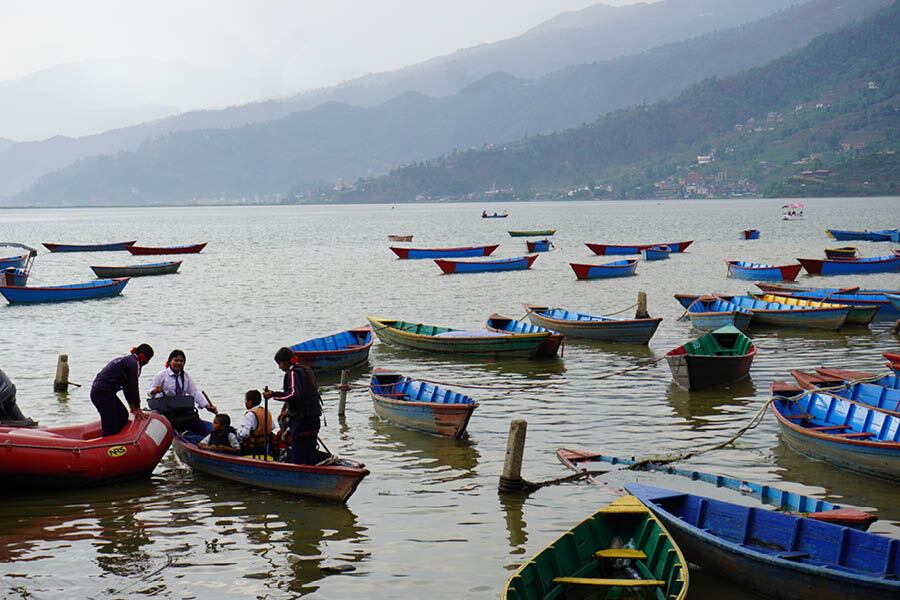
The freshwater Phewa Lake is the star attraction of Pokhara Kalpna Sunder
The centrepiece of the town is the freshwater Phewa Lake, with its crystal clear waters mirroring the majestic peaks, and colourful boats resting bobbing on the surface. The surrounding area is a tourist magnet, flanked by charming souvenir shops, cafes, restaurants and pubs.
Across the lake is the famous Tal Barahi temple dedicated to Goddess Durga, which is only accessible by boat. And up on a nearby hill across the southern shore of Phewa is the white World Peace Pagoda built in 1996, which also offers a panoramic view of the town.
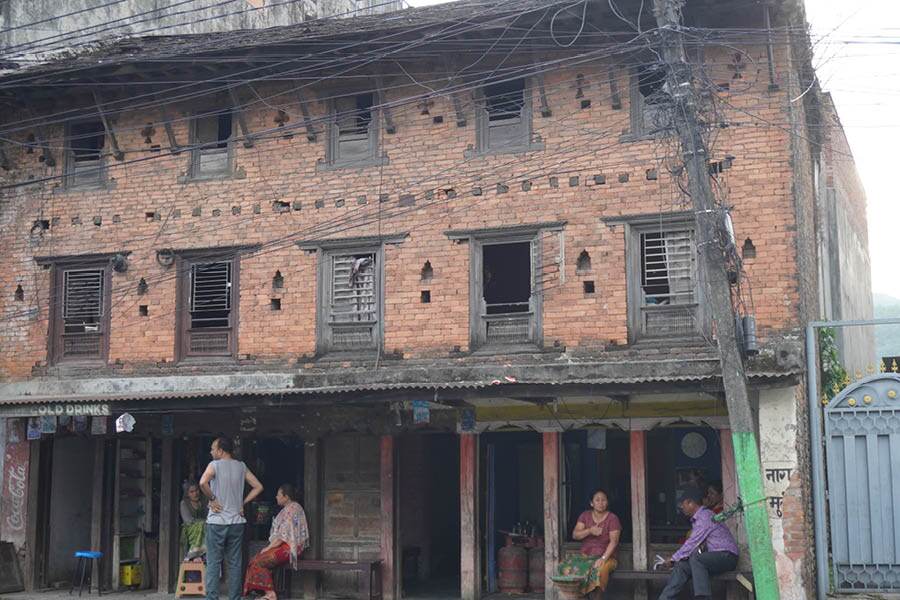
Few old-style Newari homes, many now used as shops, can be spotted in town Kalpana Sunder
I drive to the old market, where a few remaining old Newari houses of brick and wood with carved windows still stand resolute — some used as shop houses now. I understand from my local guide Hari that after the earthquake of 2015, many locals want to construct cement and brick houses instead of the old-style homes.
The land of mountaineering

The International Mountain Museum documents the mountaineering culture and history of Pokhara Kalpana Sunder
At the International Mountain Museum, I get an insight into the mountaineering DNA of the town. The museum has a collection of artefacts, original gear, and photographs of some of the highest mountains in the world and the explorers who climbed them. I also get an insight into the culture of the different ethnic groups which inhabit the mountains, from Gurungs to Thakalis.
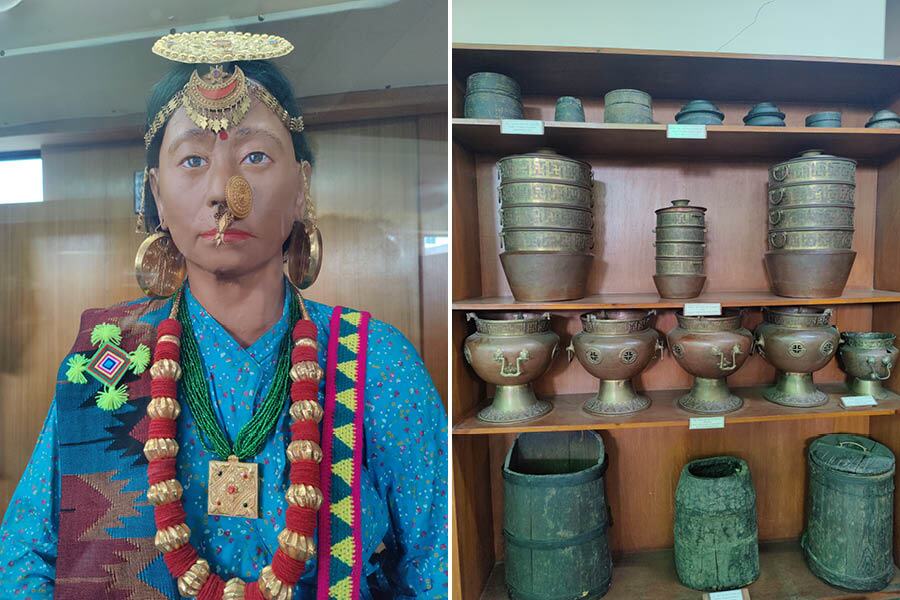
A display of traditional jewellery and utensils at the museum Kalpana Sunder
One section displays vintage kitchen utensils from old Nepali kitchens, like butter churns and huge copper vats, while another section explores the effects of climate change on mountaineering. I learn about glacier caves, which form when glaciers begin melting and can cause anyone stepping on the glacier to fall through.
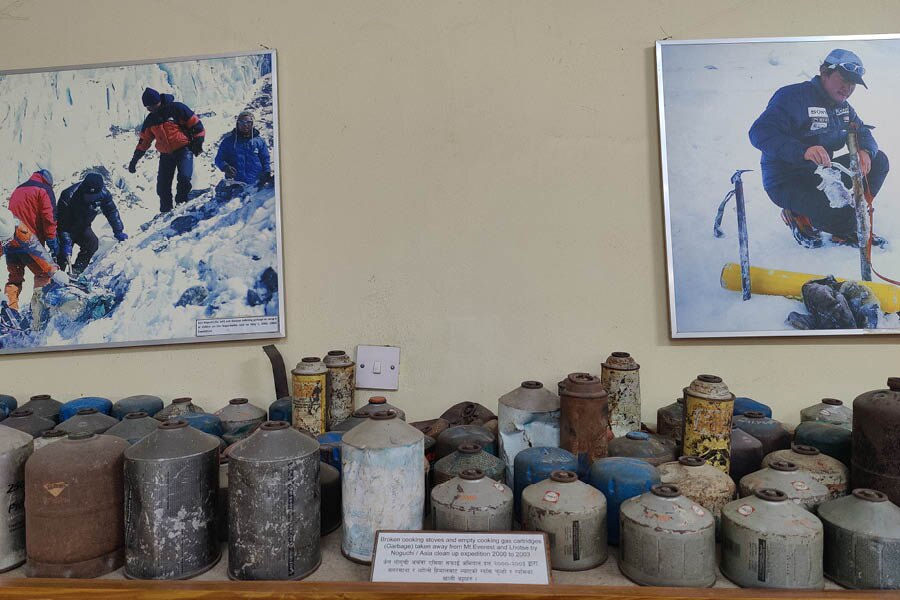
A display of waste and articles tanks collected from Mt Everest at the museum
Another interesting section displays all the garbage collected by volunteers from Mt Everest from oxygen cylinders to crampons. Nepal has some of the tallest peaks and some of the most intrepid mountaineers, so the museum is a great resource to understand this aspect of the country’s cultural fabric.
On my last evening in the town, I sit on the terrace of the lodge enjoying a Nepali meal alfresco, and wish I could bottle the tranquillity and feel of this extraordinary place, to carry with me something to look back on in the urban jungle.
Travel details
Getting there: Airlines like Vistara and Indigo fly from cities like Delhi and Kolkata to Kathmandu. From there, connect to Pokhara by a domestic flight on Buddha Air.
Best time to travel: While March-April is a good time to visit, between September and December the skies are clear and offer great mountain views.
What to eat: Pokhara has a lot of international, Tibetan, Chinese food options with dishes like noodles, thukpa, momos, being sold in restaurants and cafes. You can also try Newari and and Thakali thalis with vegetarian dishes, greens, dal, rice, and pickles. Try the local rice beer, and sample the popular buffalo meat.
